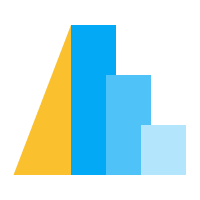Selection Detail#
This example shows a selection that links two views of data: the left panel contains one point per object, and the right panel contains one line per object. Clicking on either the points or lines will select the corresponding objects in both views of the data.
The challenge lies in expressing such hierarchical data in a way that Altair can handle. We do this by merging the data into a “long form” dataframe, and aggregating identical metadata for the final plot.
import altair as alt
import pandas as pd
import numpy as np
np.random.seed(0)
n_objects = 20
n_times = 50
# Create one (x, y) pair of metadata per object
locations = pd.DataFrame({
'id': range(n_objects),
'x': np.random.randn(n_objects),
'y': np.random.randn(n_objects)
})
# Create a 50-element time-series for each object
timeseries = pd.DataFrame(np.random.randn(n_times, n_objects).cumsum(0),
columns=locations['id'],
index=pd.RangeIndex(0, n_times, name='time'))
# Melt the wide-form timeseries into a long-form view
timeseries = timeseries.reset_index().melt('time')
# Merge the (x, y) metadata into the long-form view
timeseries['id'] = timeseries['id'].astype(int) # make merge not complain
data = pd.merge(timeseries, locations, on='id')
# Data is prepared, now make a chart
selector = alt.selection_point(fields=['id'])
color = (
alt.when(selector)
.then(alt.Color("id:O").legend(None))
.otherwise(alt.value("lightgray"))
)
base = alt.Chart(data).properties(
width=250,
height=250
).add_params(selector)
points = base.mark_point(filled=True, size=200).encode(
x='mean(x)',
y='mean(y)',
color=color,
)
line = base.mark_line().encode(
x='time',
y=alt.Y('value').scale(domain=(-15, 15)),
color=alt.Color('id:O').legend(None)
).transform_filter(
selector
)
points | line
import altair as alt
import pandas as pd
import numpy as np
np.random.seed(0)
n_objects = 20
n_times = 50
# Create one (x, y) pair of metadata per object
locations = pd.DataFrame({
'id': range(n_objects),
'x': np.random.randn(n_objects),
'y': np.random.randn(n_objects)
})
# Create a 50-element time-series for each object
timeseries = pd.DataFrame(np.random.randn(n_times, n_objects).cumsum(0),
columns=locations['id'],
index=pd.RangeIndex(0, n_times, name='time'))
# Melt the wide-form timeseries into a long-form view
timeseries = timeseries.reset_index().melt('time')
# Merge the (x, y) metadata into the long-form view
timeseries['id'] = timeseries['id'].astype(int) # make merge not complain
data = pd.merge(timeseries, locations, on='id')
# Data is prepared, now make a chart
selector = alt.selection_point(fields=['id'])
color = (
alt.when(selector)
.then(alt.Color("id:O", legend=None))
.otherwise(alt.value("lightgray"))
)
base = alt.Chart(data).properties(
width=250,
height=250
).add_params(selector)
points = base.mark_point(filled=True, size=200).encode(
x='mean(x)',
y='mean(y)',
color=color,
)
line = base.mark_line().encode(
x='time',
y=alt.Y('value', scale=alt.Scale(domain=(-15, 15))),
color=alt.Color('id:O', legend=None)
).transform_filter(
selector
)
points | line
